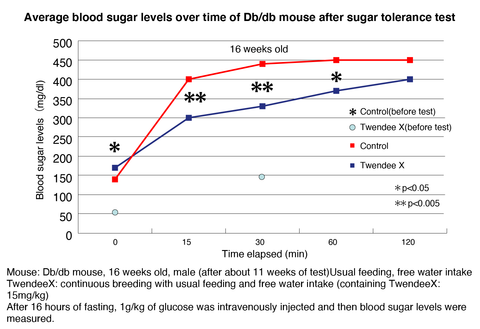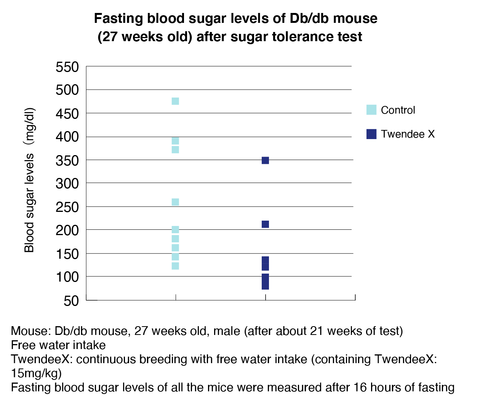Diabetic Mice and Antioxidant Action
March 9, 2021
Diabetic Mice and Antioxidant Action
I explained in the article “Diabetes and Oxidative Stress” that there is a relationship between diabetes and oxidative stress. In this article, I would like to introduce the data obtained by administering Twendee X, a compound we developed, to diabetic mice.
First of all, there is a book called “Diabetes and Oxidative Stress”.
According to the book, diabetes is a disease in which pancreatic cells are damaged by oxidative stress even before symptoms appear, and when blood glucose levels become high, oxidative stress rises further, and when oxidative stress rises, complications occur. The main complications include kidney damage and atherosclerosis of the eyes.
It also says, “If we can lower oxidative stress, diabetes and complications should improve”. At this time, there was still no antioxidant combination product developed by the antioxidant research department.
The contents of the book “Diabetes and Oxidative Stress” can be summarized as follows
1. Pancreatic cells are damaged by oxidative stress even before the onset of the disease
2. Oxidative stress increases when blood sugar levels are high.
3. Complications such as kidney damage are caused by oxidative stress.
If oxidative stress can be lowered, diabetes and complications will improve.
In light of this, let’s move on to the research. This time, we are going to conduct an experiment on Db/db mice (a diabetic model). These Db/db mice are insulin-independent (type 2) diabetic mice with symptoms similar to those of human obese diabetes.
Db/db mice (diabetic model)

They have abnormal receptors for leptin (which signals satiety) and keep eating. A normal mouse is below, but Db/db mice get fat as above.
This Db/db mouse blocks leptin in a type 2 diabetes model.
Leptin is a peptide hormone that acts on the appetite center in the hypothalamus of the brain, suppressing appetite and instructing the body not to eat any more.
In addition to suppressing appetite, leptin is also involved in metabolism and excites the sympathetic nervous system, which increases energy expenditure.
The Db/db mouse in the upper photo, in which leptin, which is involved in appetite and metabolism, is blocked, is much fatter than the normal mouse in the lower photo.
This is a comparison of these mice with no treatment = control and water mixed with Twendee X.

After about 10 weeks of experimentation, the blood glucose level of mice fed Twendee X drops.

This data shows that fasting blood glucose levels are naturally lower in the group receiving the drug.

Here we are measuring insulin. Compared to the control, you can see that the Twendee X produces more insulin.
This is because Twendee X suppresses oxidative stress and blood glucose levels even when you are overeating, so it produces more insulin. I guess that’s how it works.
This was the same trend in humans.
From the data of the Db/db mice, we were able to confirm that the administration of Twendee X, which has an antioxidant effect, reduced the blood sugar level to some extent. We will continue to collect data on the effects of oxidative stress on diabetes, so we will report again when we have a more complete picture.
